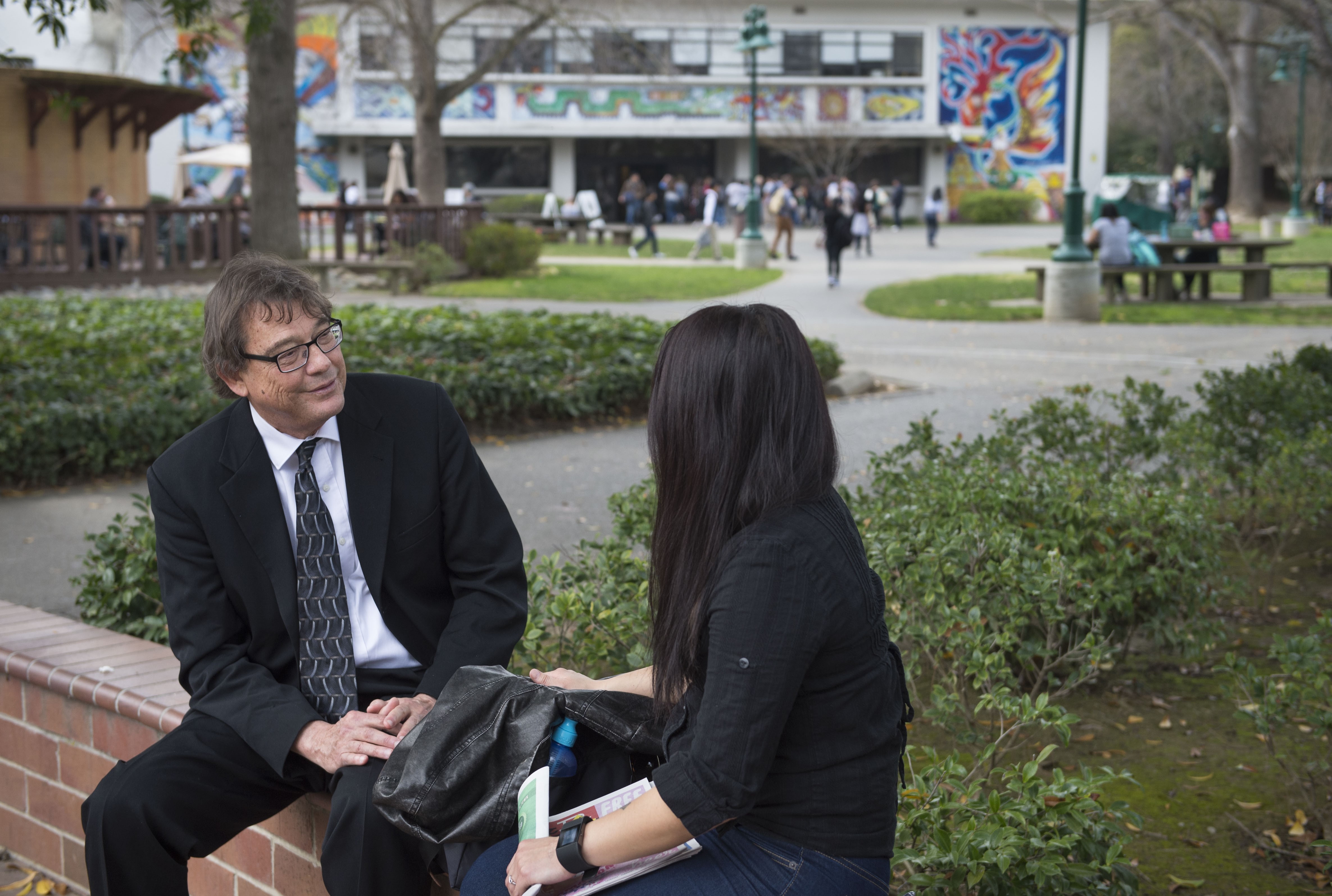 Although it's too early to know how this year's freshman students will fare, the number pledging to take class loads that will allow them to graduate in four years is encouraging. (Sacramento State/Jessica Vernone)
Although it's too early to know how this year's freshman students will fare, the number pledging to take class loads that will allow them to graduate in four years is encouraging. (Sacramento State/Jessica Vernone)Sacramento State’s Finish in Four campaign is a measurable success little more than a year after its inception. Still, seeking to better serve students, the campaign’s architects are making some tweaks.
Higher four-year graduation rates remain and always will be a goal, but the initiative has another primary thrust: reinforcing a strong partnership between instructors and students so they graduate in four years while gaining and retaining the knowledge that will make them successful professionals.
“It’s not about graduation. That’s secondary,” says graduation "czar" Jim Dragna, whose official title is executive director of University Initiatives and Student Services. “The primary is really about creating a successful learning environment.
“You see a significant cultural shift in how our students are progressing.”
In past years, the University had little recourse other than, essentially, “performing autopsies,” in Dragna's words. There was no way, he says, to tell if the learning environment was successful until after a cohort of students had moved on from Sac State. The new ability to use “big data” has improved University culture.
Analytics based on students’ educational experience, courses, or activities are being used to determine their probability of success. So, although there’s no four-year cohort yet tied to Finish in Four, Dragna says the University can with reliable accuracy predict graduation rates based on students’ progression rates.
“The University is becoming much more scientific in terms of what it’s offering and getting that information to instructors as well,” he says.
That leads back to the critical student/instructor partnership. Dragna says faculty have a great effect on “persistence” – that is, seeing college through to a degree. Much of that comes by way of “nudging,” which can be as simple as a professor’s advising that a tough test is coming and that studying a particular chapter and getting adequate sleep are essential.
Dragna says it differs little from what many of us received from our parents and elementary school teachers.
 Jim Dragna, left, Sacramento State's "graduation czar," says that increased use of analytics is helping the Universtiy better assess student progress. (Photo courtesy of The Sacramento Bee/Lezlie Sterling)
Jim Dragna, left, Sacramento State's "graduation czar," says that increased use of analytics is helping the Universtiy better assess student progress. (Photo courtesy of The Sacramento Bee/Lezlie Sterling)“That changes the relationship,” he says. “For most of our faculty, that’s just validating what they’ve done for years, but giving them statistical reasons to even do it more so.”
Real-time data collection allows faculty to act in real time to help students who are at higher risk of falling behind, even in the first couple of weeks of the academic term. The information is sent to deans and faculty; the University then can intervene, as Dragna says, “in the moment” based on this information, and actually help change outcomes.
“Now we can look at the interventions themselves and see how effective they are,” he says. “Is the prescription working? And how effective is it – not just in a causal sense, but cost-wise.”
The importance of these prescriptive analytics is difficult to overstate. Dragna points out that the reasons a student in first-year academic standing drops out likely are different than those of a student in fourth-year standing.
“Now we’re getting at what we can do to help those individual issues as they come up,” he says.
Students are on board. Among incoming first-year students this fall, 84 percent took the Finish in Four pledge, compared with 62 percent in Fall 2016. Among first-year students in Fall 2016 – the first semester of Finish in Four – 47 percent took 30 or more units, with 36 percent completing all 30. Compare that with the Fall 2015 cohort, which was at 35.1 percent and 27.1 percent, respectively.
Dragna says Sac State professors desire a strong partnership with students and that, as a teaching university, it is “uniquely positioned” to foster personal and educational growth. “You have the right people at the right time,” he says.
“Students are really fired up,” says Bridget Parsh, director of First Year Experience. “They have (Finish in Four) in their vocabulary.”
It helps that they have been empowered. Fall 2016 saw the addition of 658 new course sections and more than 12,000 additional seats. Dragna describes course offerings as being consumer-driven – that is, demand determines when they are offered. That includes summer session, in which more students are enrolling.
Students also are taking advantage of the Smart Planner, part of Sac State’s Keys to Degrees Toolbox. Vincent Villegas, a junior sociology major, has made it a utility.
“It allows me to plan out my future schedule and allows departments to be able to plan for that semester when I take that specific class,” he says.
Parsh likens the Smart Planner to a “diet plan” that gives students a sense of control and helps them get their heads around the overwhelming undertaking that college can become.
She and Dragna both point to research showing that students actually fare better when their semester load is 15 units. Grade-point averages are .67 points higher for freshmen shouldering that much class responsibility, .34 points higher for transfers, according to the Office of Institutional Research.
“Our students do better when they’re more engaged. … Taking 15 (units) really gets them involved,” Parsh concludes. – Ahmed V. Ortiz
